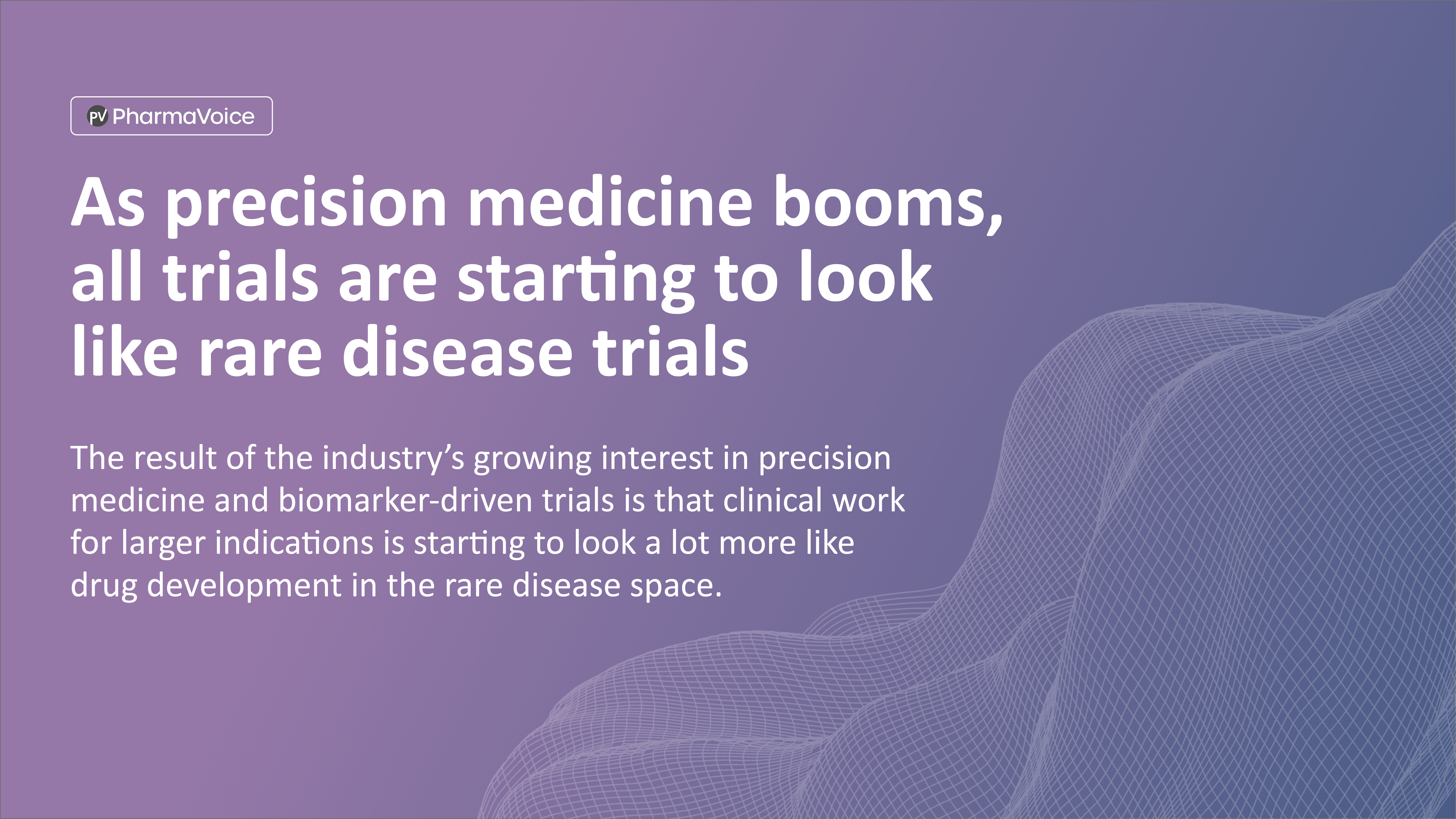News provided:
April 19, 2024, 10:45 AM EDT

By Kelly Bilodeau (Originally Published April 18th, 2024 on pharmavoice)
As precision medicine booms, all trials are starting to look like rare disease trials, the company said.
_____________________________________________________________________________________________________________
The rise of biomarker-driven trials is adding new pressures on drug developers — from strictly defined inclusion criteria to growing scientific complexity that make enrollment targets harder to hit. And these challenges are colliding with the constant goal of reining in study costs.
To better prepare for this type of clinical work, some companies are turning to study feasibility analyses, said Rohit Nambisan, CEO at Lokavant, a clinical trial intelligence platform that spun off from Roivant Sciences.
“We’re starting to see an urgent need to have more justification, more rigor and more data behind the decisions on which studies … should move forward,” Nambisan said.
And the result of the industry’s growing interest in precision medicine and biomarker-driven trials is that clinical work for larger indications is starting to look a lot more like drug development in the rare disease space.
One of the key factors driving this shift is the market. Companies are running out of room to improve on existing drugs for large indications and so many are looking for a more targeted approach.
“There are only so many drugs you can put into the Type 2 diabetes market before you’re completely saturated,” Nambisan said.
In response, some companies have pivoted to pursuing smaller segments of these larger markets, such as chronic kidney disease for Type 2 diabetes patients. Oncology is at the forefront of this change.
More than half of cancer trials now use biomarkers, compared with 16.5% of trials overall, according to Lokavant.
And while biomarkers make it easier to demonstrate a drug hit its target, they make it tougher to find participants that meet narrow criteria and require more biospecimen collections before and during the trial, which can turn off potential participants. The additional complexity of these trials also makes it harder to find specialized vendors, Nambisan said.
Tackling decisions with data
A feasibility analysis can help sponsors gauge how successful they will be at overcoming these hurdles before the trial begins.
For example, it can help sponsors choose the right sites. One oncology trial needed people who expressed human leukocyte antigen-A*02:01 and found more people met that criteria in Europe than in North America, enabling location selection with a greater chance of success.
Feasibility analyses can also improve trial diversity, an FDA priority, and help ensure the study will mirror the drug’s use in the real world.
“Representation is not just about access. Representation is also about ensuring [a drug] is safe for demographics of the population that are going to be impacted heavily by these conditions,” Nambisan said. “There’s been numerous examples in the past of certain minority populations that either the drug wasn’t effective for, because of some epigenetic variability or for other reasons that we just never detected because there was a lack of representation of that demographic in the trial.”
Lokavant uses a machine learning model that melds data to generate predictions about where a trial is heading, giving them the power to correct course. Using data to drive better decisions ultimately increases the odds of success and helps avoid costly mistakes, the company said.
Many other companies, such as IQVIA and Florence Healthcare, also offer similar services. But pharma’s that prefer not to outsource the process can also conduct their own feasibility analysis to ensure that trials will hit the mark when it comes to enrollment and budget.

